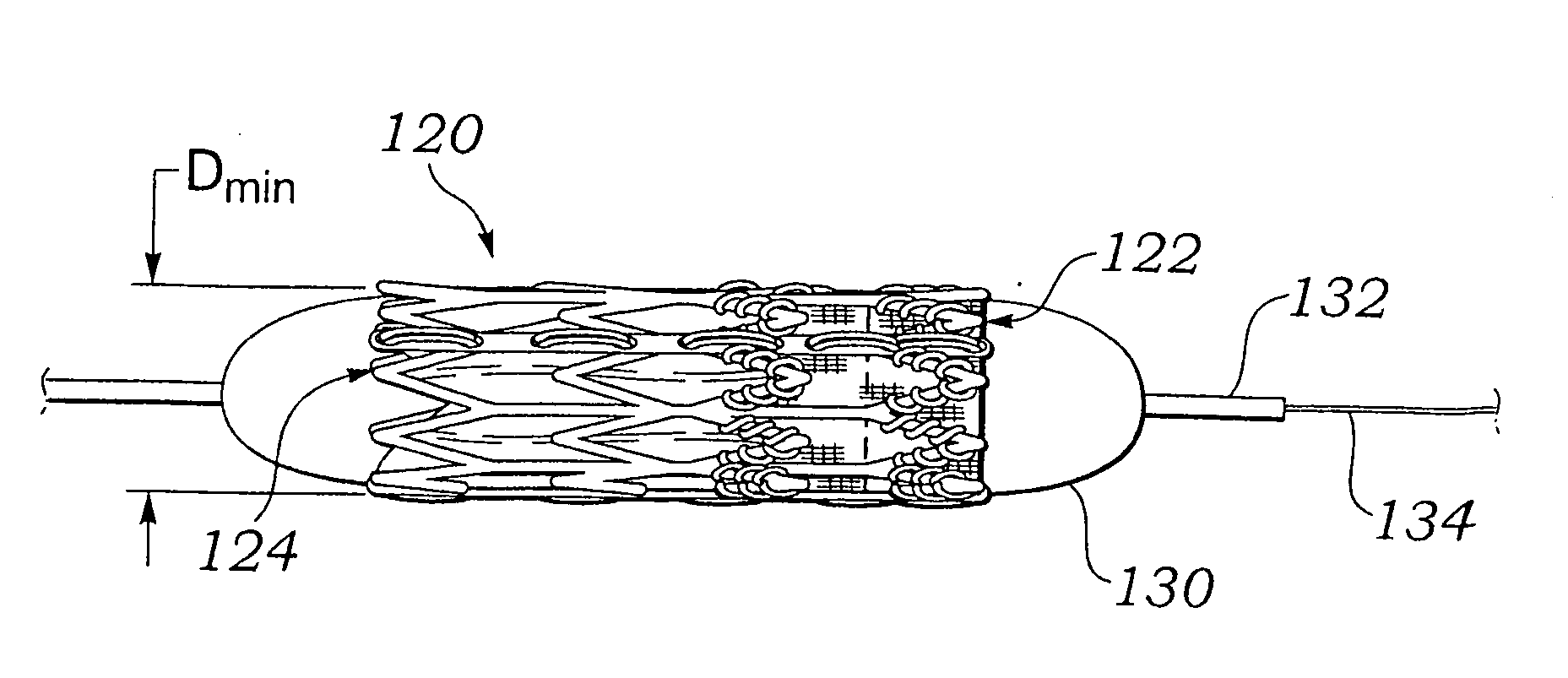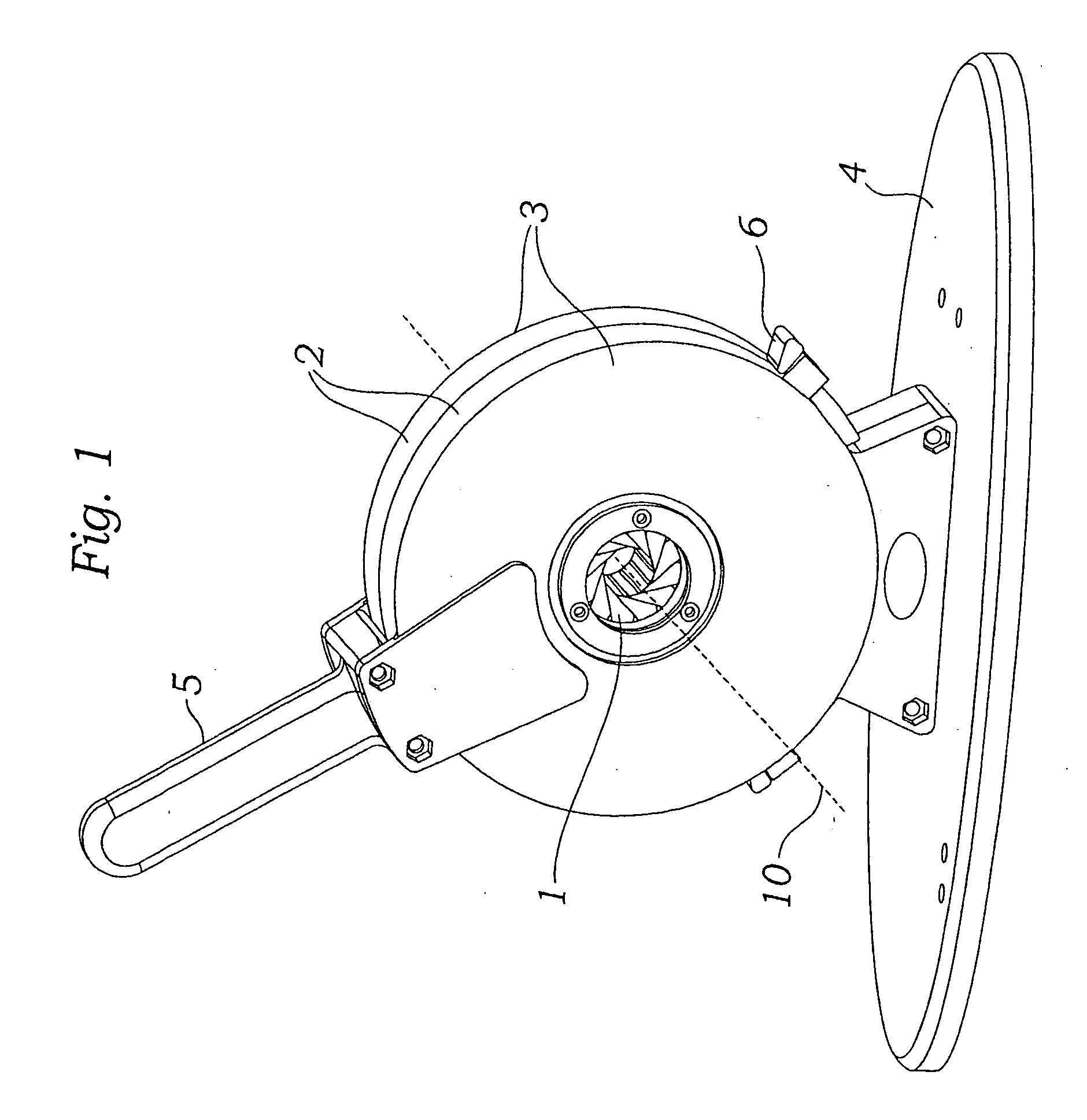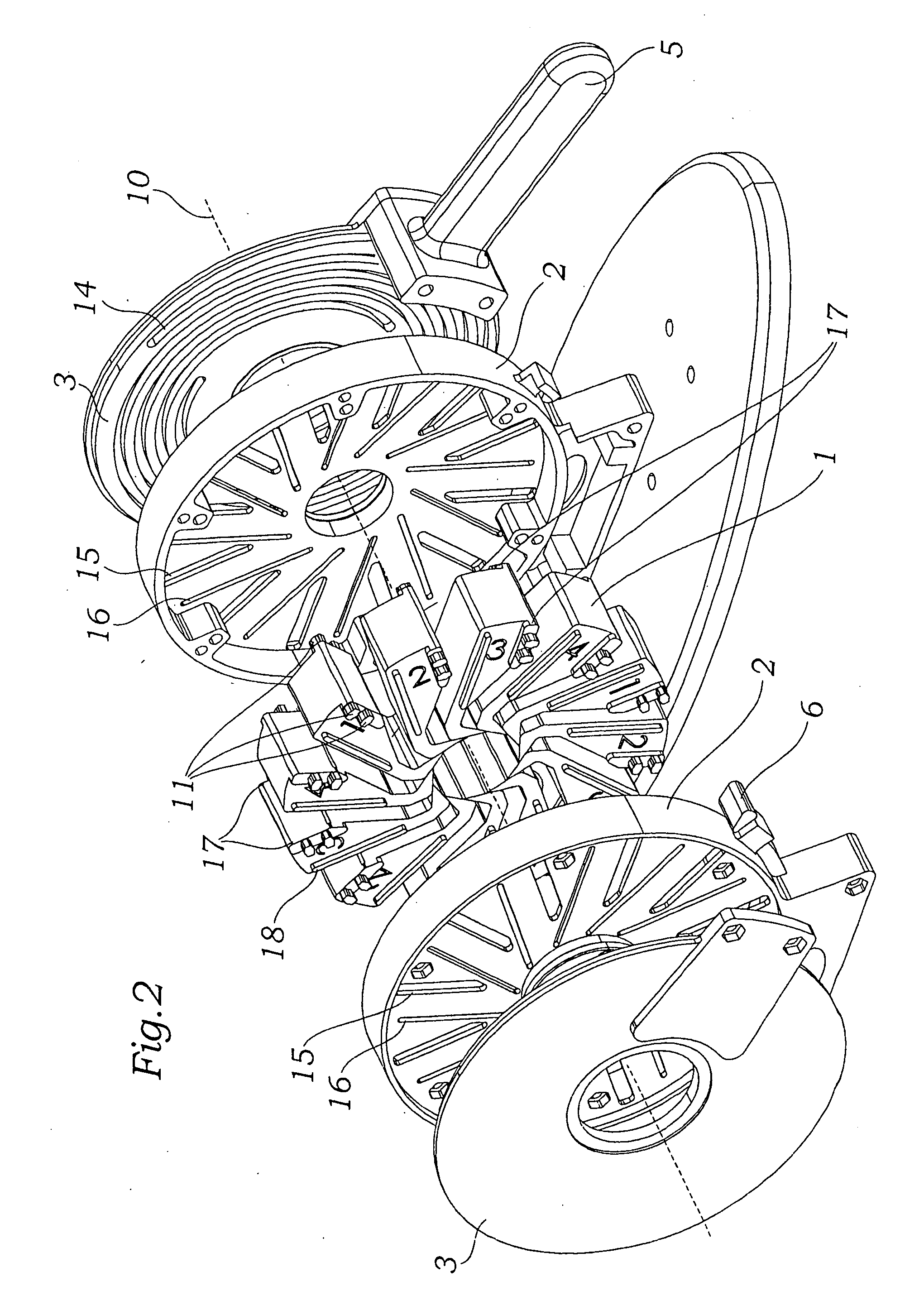Method of crimping a prosthetic valve
a prosthetic valve and crimping technology, applied in the field of crimping devices, can solve the problems of reducing the effectiveness of this type of device, reducing the efficiency of crimping devices configured for use with coronary stents, and not being suitable for stent-based prosthetic valves
- Summary
- Abstract
- Description
- Claims
- Application Information
AI Technical Summary
Benefits of technology
Problems solved by technology
Method used
Image
Examples
Embodiment Construction
[0046] The present invention provides an improved crimper for stents or prosthetic valves. The particularly advantageous features of the present crimper enable reduction in diameter of relatively large stents or prosthetic valves. The crimper is especially suited for crimping prosthetic heart valves which have expanded diameters significantly larger than most stents currently in use. According to Chessa, et al., the Palmaz-Genesis XD stents (Cordis J&J Interventional Systems Co.) are designed for an expansion range of 10-18 mm, and are considered as either large or extra-large stents (see, Results and Mid-long-term Follow-up of Stent Implantation for Native and Recurrent Coarctation of the Aorta, European Heart Journal Volume 26, No. 24, Pp. 2728-2732, published online Sep. 26, 2005). The most frequently used stents are significantly smaller, in the 3-6 mm range. Crimpers for these stents have proved inadequate for reducing in size even larger prosthetic valves, such as the stented ...
PUM
| Property | Measurement | Unit |
|---|---|---|
| Angle | aaaaa | aaaaa |
| Angle | aaaaa | aaaaa |
| Angle | aaaaa | aaaaa |
Abstract
Description
Claims
Application Information
 Login to View More
Login to View More - R&D
- Intellectual Property
- Life Sciences
- Materials
- Tech Scout
- Unparalleled Data Quality
- Higher Quality Content
- 60% Fewer Hallucinations
Browse by: Latest US Patents, China's latest patents, Technical Efficacy Thesaurus, Application Domain, Technology Topic, Popular Technical Reports.
© 2025 PatSnap. All rights reserved.Legal|Privacy policy|Modern Slavery Act Transparency Statement|Sitemap|About US| Contact US: help@patsnap.com



